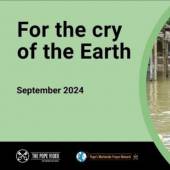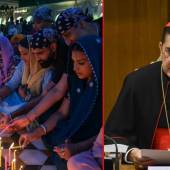World Migratory Bird Day (May 9,2020)

World Migratory Bird Day is celebrated twice a year, on second Saturday in May and October, to highlight the need for the conservation of migratory birds and their habitats. The United Nations is one of the many organizations that support this global awareness campaign.
What Do People Do
On the second weekend each May, people around the world celebrate World Migratory Bird Day by organizing public events such as bird festivals, education programs and bird-watching excursions.
Background
Although the event is usually on the second weekend of May, the first World Migratory Bird Day was launched on the weekend of April 8–9, 2006. The event was created to help turn the world's attention to the wonders of bird migration and the need for their conservation. Each year, the total number of registered World Migratory Bird Day events has steadily increased along with the number of countries in which these events occurred.
The international community needs to take urgent action to mitigate unnecessary injuries and mortality of migratory birds due to plastic pollution. Together we can help to curb the giant tide of plastic. World Migratory Bird Day is a unique chance to unite efforts in addressing this rapidly growing environmental problem.
Winged Migrants Remain Vulnerable, and Climate Change is Making it Worse
Every year, migratory birds take long routes of thousands of kilometers across continents and oceans, in search of suitable habitat and ideal climate for breeding, food, and shelter. These factors are vital for their survival, which makes them take an excruciating journey year on year.
While planning this arduous journey, birds usually gauge the changing season patterns to start their migration period. In their journey, climate plays an important role, in terms of air temperatures, wind patterns, and seasonality. Over the past few decades, significant changes in the climatic pattern due to the increasing global temperature has started to disrupt the migration cycle of birds. In addition to the pre-existing threats like habitat loss, pollution, and an increase in the frequency of disasters, migratory birds have become more vulnerable than ever due to climate change.
“Migratory birds connect to all of these habitats, and they connect us and the places where we live to people and places around the globe,” said Amy Fraenkel, Executive Secretary of United Nations Convention on Migratory Species (CMS) in a statement. She further added, "Yet, migratory birds are under threat, from loss of habitat, climate change, poisoning, power lines, and illegal killing. We need to step up our actions across the world to better protect migratory birds and the habitats they need to survive and thrive.”
According to the State of India Birds Report 2020, migratory species both long-distance and within the subcontinent have witnessed a steep decline. Experts suggest that change in climatic condition—be it in the Arctic or other continents of the world—can increase the length of journey, arrival and return timings, decrease the species population and reduce migratory spots.
Most species have the potential to be affected by climate change in myriad ways. The climate-induced impacts can be linked to change in water levels, loss of wetlands, less food availability, sea-level rise, change in wind patterns, habitat shifts, changes in prey range, heavy precipitation, and increased storm frequency.
The unprecedented challenge of climate change could be among the greatest threats to both biodiversity and its most sensitive species in the near future. Therefore, ecologists from around the world urge timely reduction in the carbon emission to keep these beautiful creatures, that connect our world, alive.
Source: TWC India
Radio Veritas Asia (RVA), a media platform of the Catholic Church, aims to share Christ. RVA started in 1969 as a continental Catholic radio station to serve Asian countries in their respective local language, thus earning the tag “the Voice of Asian Christianity.” Responding to the emerging context, RVA embraced media platforms to connect with the global Asian audience via its 21 language websites and various social media platforms.














